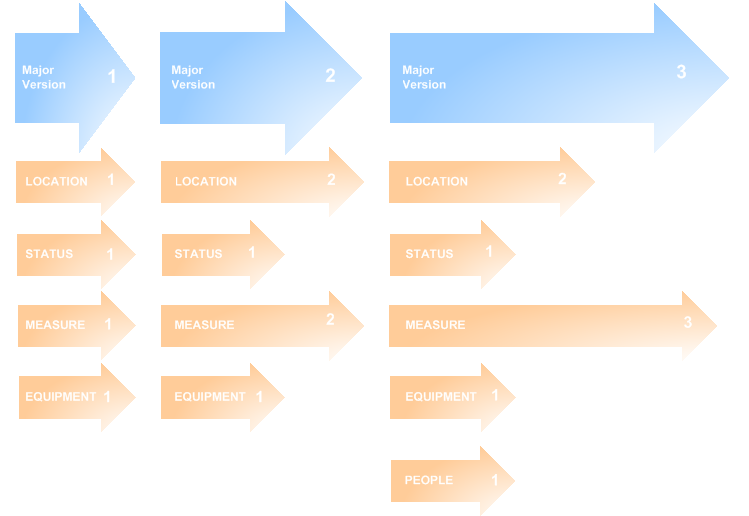Version control
Version control provides the capability to track and audit any changes made to reference data.
It avoids problems such as losing the history of a location just because its status was changed from 'capital' to 'operating' or from 'development' to 'production'.
Version control is applied at two levels:
- A "major version number" is assigned to all the reference data when it is first published.
- A "minor version number" is subsequently updated for each reference group (Location, Equipment, Status, Material. Measure etc.) whenever a change occurs.
Whenever an application needs to access the reference data, it is the major version that is of immediate interest.
As an example, consider a site that has four reference groups: Location, Equipment, Status, and Measure.
- When you first publish the reference data, the major and minor version numbers will be the same.
- If an administrator later adds a couple of locations and a measure then republishes the data, the major version number is elevated to 2.
-
If a new reference group is subsequently added for PEOPLE, as well as a measure, the major version number is elevated to 3 after publishing.

Having minor versions eliminates the need for the entire set of reference data to be distributed every time a new version is published. Only minor versions that have changed need to be distributed.
Checking groups in and out
In order to track changes and allow those changes to be easily rolled back, the reference groups displayed in the Reference Edit window have a version number history associated with them.
They must be checked out before you can edit them. Checking out a group also ensures that the same group can not be edited by another user at the same time.
After making changes to a reference group or item, you should Publishing changes to Reference Data and check the group back in.